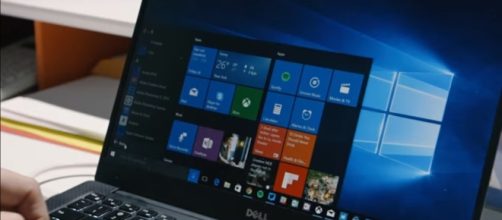Last week, Microsoft CEO Satya Nadella announced at Redmond's annual One Week Hackathon the company's plans for Windows 10 to support native eye tracking. This new technological advancement is to provide assistance to people suffering from motor disabilities or disorders such as ALS and MS. The inability to use interface that typically requires a mouse and keyboard will now be intervened with the Eye Control, which is a new feature that will make navigation and control possible for people with motor dysfunctions. With only days after the announcement, the company has now released a beta through Windows Insider Preview version 10.0.16251 or higher.
How Eye Control started
Eye Control was inspired by the Eye Gaze Wheelchair project, a winning piece of work back in 2014's One Week Hackathon. At the time, the primary beneficiary was Steve Gleason, a former NFL player diagnosed with amyotrophic lateral sclerosis or ALS. It is a neurodegenerative disease that affects and incapacitates the motor abilities of its victims. The project enabled Gleason to drive his motorized wheelchair by looking at a Surface tablet with custom software.
In the years that followed, Microsoft continued to work with individuals affected by motor neuron diseases to find out how technology can make a difference in their lives. This led to the formation of an engineering team that will eventually bring the eye-tracking mechanism to Windows.
In the years since Microsoft researchers worked with ALS groups and affected individuals to study how technology could help improve their lives. Eventually, Microsoft dedicated an engineering team to bringing eye-tracking to Windows. And now, with the official announcement as well as the beta available for testers, the promise and premise of Eye Control are about to materialize soon.
A few notes on this incredible new technology
The Eye Control is available in Windows 10, and this new feature will require the function of select cameras such as the Tobii 4C. According to Tobii, it serves some vital functions including shape writing, which speeds up typing by simply looking at the first and last letters of the word and glancing at those in between.
The mouse can also be navigated by looking at the area of the screen where the cursor wants to be placed.
Microsoft has been working closely with Tobii to develop Eye Control. Eventually, other Tobii-products such as Tobii Dynavox PCEye Mini, PCEye Plus, EyeMobile Plus and I-series will support the feature soon. For now, the beta version can be accessed in Windows 10 with an insider program account.
According to computer scientist Haiye Yuan from the University of Surrey, it is important to note that the native eye tracking device may not be as beneficial for able-bodied users compared to its targeted user set. Yuan specializes in human computer interaction and usable security and is currently using eye-tracking data in his studies on authentication systems.
According to his research, most participants reported eye fatigue, which is a likelihood for potential users who are not immobile.
While such breakthrough can be considered a magnificent contribution, it is also essential to keep in mind the primary purpose of its creation and inception before deciding to make use of this new features. In any case, Microsoft has clearly brought this technology to improve the lives of its targeted audience while the rest are expected to be digitally healthy in utilizing the platform.


